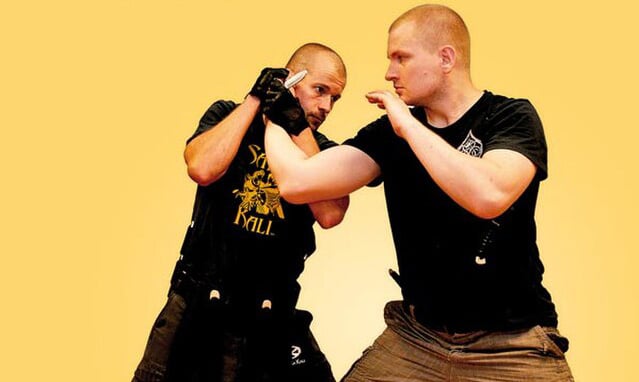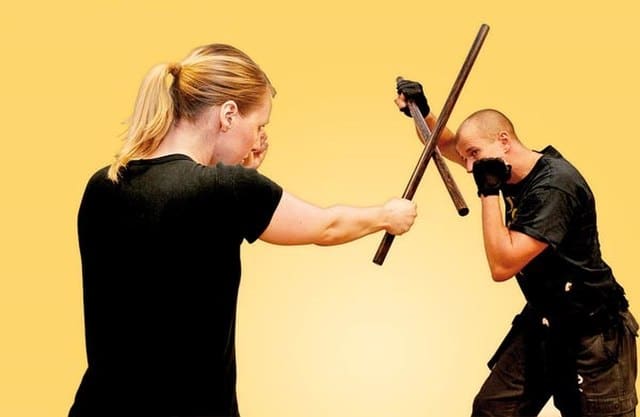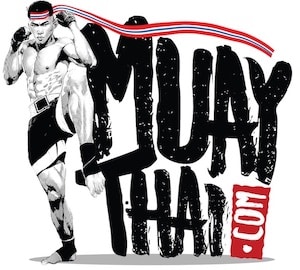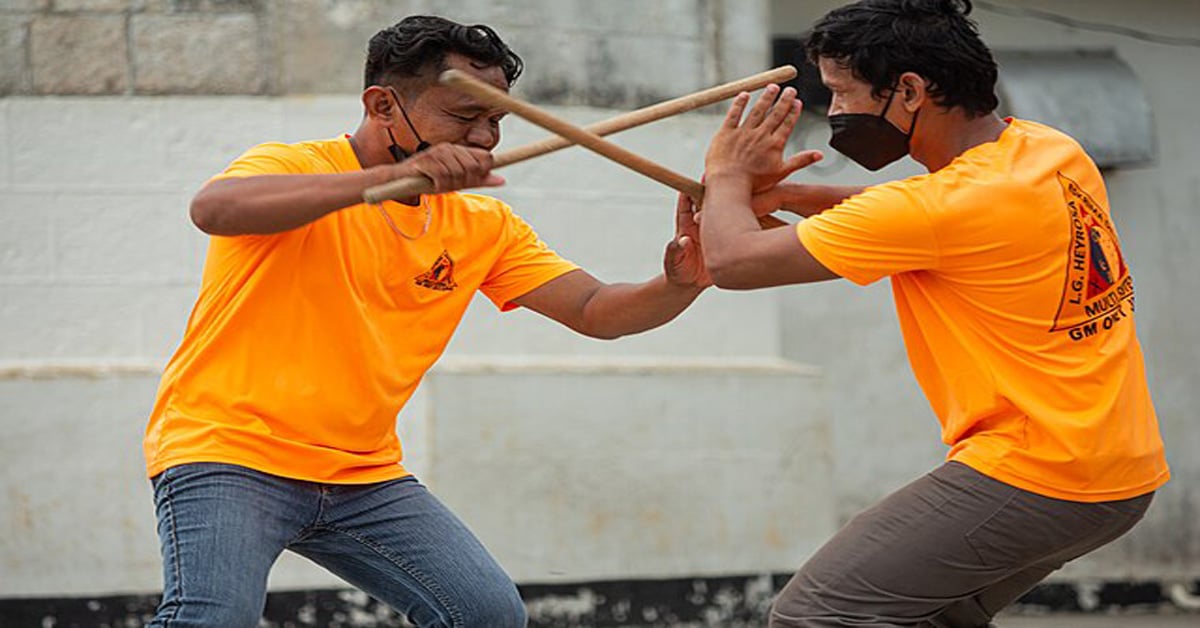Arnis: Eskrima The Deadly Martial Art of The Philippines
Arnis, also known as Eskrima or Kali, is the deadly martial art of the Philippines. This fighting form is a precolonial combat sport that the Spanish conquistadors feared as it took the lives of many who attempted to capture the islands.
There are three forms of this martial art – Arnis, Eskrima, and Kali. There are slight differences between these three largely based on location. Largely, though, the terms can be used interchangeably. All three of these are used to describe the fighting techniques of The Philippines. These incorporated armed combat with the use of blades, and bastons (staff), plus had an unarmed aspect as well.

The History of Arnis & Eskrima
Much of the precolonial history of The Philippines had been lost when the islands were taken over by that of the Spanish conquistadors. Religions, languages, cultures, and histories were lost and destroyed. Similarly, the martial art Arnis, Eskrima, or Kali, had its precolonial history lost as well.
Many believe the base of Kali could have come from various regional travelers. Much of the forms in Arnis, Eskrima, and Kali can be found in other martial arts throughout southeast Asia. The fighting form utilizing two sticks or staff was believed to have originated in ancient India through the combat sports of Silambam. This fighting art was spread by Indian traders to much of southeast Asia, including Thailand which is believed to have led to Krabi Krabong. Many believe that Silat can draw its origins from Silambam as well.
Prior to the Spanish conquest of the Filipino islands, this area had thousands of languages and differing cultures. These islands would often war and raid one another. The constant neighborly warfare created incredibly strong warriors.
In 1521, Spanish explorer Ferdinand Magellan held an expedition and eventually found his way to Mactan Island which was led by Lapulapu. The Spanish were looking to spread the word of the King and Catholicism and were armed with guns and steel armor. Using various weapon types, such as swords and bamboo sticks, the Lapulapu warriors fought off the Spanish and slaughtered many during this battle. Due to the victory, the warrior chieftain Lapulapu is still celebrated in Filipino culture to this day. It is believed that his warriors were trained in Eskrima.
The people of The Filipino islands earned a reputation for their fighting fierceness. Often, these warriors would be hired by foreign nations to work as mercenaries. Siam and Burma were frequently at war and would often hire mercenary armies from Luzon and elsewhere in the country. Malacca also hired Filipino warriors to fight the Portuguese at various points in history. Luzon mercenaries are also credited with leading explorers to other nations all around the Pacific and Indian oceans.
Spanish Governor Francisco de Sande wrote down how incredible the Filipino people were at combat. He wrote:
“The people of this country are not simple or foolish, nor are they frightened by anything whatever. They can be dealt with only by the arquebuse, or by gifts of gold or silver … They kill the Spaniards so boldly, that without arquebuses we could do nothing. This was the reason that Magallanes, the discoverer of these islands, was killed; and that Villalobos and Sayavedra, and those who came afterward from Nueva España were maltreated.
All those who have been killed since the coming of Miguel Lopez de Legazpi received their death through lack of arquebuses. The [locals] have thousands of lances, daggers, shields, and other pieces of armor, with which they fight very well. They have no leaders to whom they look up.”
The fighting techniques found in Eskrima or Arnis were passed down mostly through the lower class of society verbally, therefore much of it was not recorded by way of writing. This way of passing knowledge was beneficial when the Spanish ruler outlawed citizens from owning swords. When the Spanish began taking over the Filipino islands, many people began swords and daggers in place of batons or staffs.
However, with the decree outlawing swords, the staffs and batons were brought back. This is the knowledge that was passed from generation to generation. It was a form of fighting focused on self-defense that could be used by any class of society. From farmer, peasant, or soldier.
Some even theorize that modern-day cock fighting was brought about in the Philippines due to Spain outlawing various forms of martial arts. Hand-to-hand and armed combat were popular as spectator sports, similar to ancient Muay Boran, prior to this era.

Weapons
There are several weapons associated with Eskrima. Through these names, we can see how significant the Spanish language became. These are the most common.
Baston – Single Staff
The most common weapon in Eskrima is the single stick, often made of rattan or hardwood. The baston is used for both striking and defending.
Doble Baston – Double Staff
This is where a fighter will use two sticks at the same time. This method increases the complexity of drills and techniques, as practitioners must coordinate both hands while attacking and defending. This form is used in Batman comics.
Espada y Daga – Sword and Dagger
This refers to the combination of a longer blade (the sword) and a shorter blade (the dagger). Techniques involve using the longer blade for powerful slashes and thrusts, while the dagger can be used for blocking, parrying, or close-quarters stabbing.
Tapon – Throwing Weapons
Practitioners are taught to use small throwing weapons like darts or spikes. These are often secondary weapons, used to distract or injure an opponent from a distance.
Bolo
A bolo is a large cutting tool that resembles a machete. It is traditionally used for agricultural purposes in the Philippines, but it has been integrated into the martial arts for its effective slashing capabilities.
Karambit
The karambit is a small, curved knife that can be held with the blade pointing downwards from the bottom of the fist. Its unique shape allows for slashing, hooking, and trapping techniques.
Panantukan – Empty Hand
While Eskrima is primarily known for its weapons techniques, it trains practitioners in unarmed combat as well. This system integrates punches, kicks, elbow strikes, and grappling.
Modern Eskrima, Arnis, Kali
Over the years, Eskrima/Arnis has seen a rise in organized competitions, both locally within the Philippines and internationally. These tournaments help to standardize rules and techniques for sports purposes.
One of the most well-known formats for modern Eskrima competition is the World Eskrima Kali Arnis Federation (WEKAF) system. It involves full-contact stick fighting where competitors wear protective armor, including headgear, vests, and arm and leg padding. Points are scored based on the precision and power of strikes.
In addition to combat, there are also Sayaw or Anyo competitions. This involves practitioners performing pre-arranged sets of movements, either solo or with a partner. Competitors are judged based on their technique, fluidity, and presentation. It is another important parts of Eskrima and Arnis.
The Southeast Asian Games (SEA Games) is a biennial multi-sport event involving participants from the Southeast Asian region. Eskrima/Arnis has been included in several editions of the SEA Games.
Eskrima and Arnis were first included in the SEA Games in the 1991 edition held in Manila, Philippines. Its inclusion has varied over the years, but there has been a resurgence in interest, especially with the Philippines hosting the 2019 SEA Games. The SEA Games typically feature multiple Eskrima/Arnis events.

Techniques of Eskrima and Arnis
Eskrima and Arnis encompass a wide array of techniques, ranging from strikes to disarms and from locks to throws. Listed below are just a few of the techniques that can be found in Eksrima’s teaching. This is not all of the techniques, only some examples.
- Abaniko: This is a fanning or waving strike, delivered quickly with a snapping motion of the wrist. It’s often used for quick attacks or to distract an opponent.
- Redonda: These are circular or looping strikes, typically delivered in succession. They can be executed with a single stick, double sticks, or even a blade.
- Cross Strike: A diagonal strike, this usually travels from the shoulder to the opposite hip, and can target various body parts.
- Horizontal Strike: Moving from side to side, this strike typically targets an opponent’s torso or head.
- Umbrella Block: A circular blocking motion often used against overhead strikes.
- Low Wing Block: A downward block used against low strikes targeting the legs or lower torso.
- Trap and Lock Disarm: Trapping the opponent’s weapon hand and then applying a joint lock to make them release the weapon.
- Joint Locks: Techniques that target an opponent’s joints, restricting their movement and potentially causing pain or injury.
- Throws and Takedowns: Using leverage and balance disruption to take an opponent to the ground.
Much of this history, tragically, has been obscured by Spanish colonization, leading to the loss of numerous cultural, linguistic, and martial traditions. The warriors of these islands were feared and famed for their fighting expertise. This resilience ensured its survival, handed down verbally through the grassroots of society, from farmers to soldiers. The techniques of Eskrima were passed down through multiple generations and are still used to this day through modern competitions. Eskrima and Arnis are more than just a martial art, it is a pillar of Filipino culture and history.

